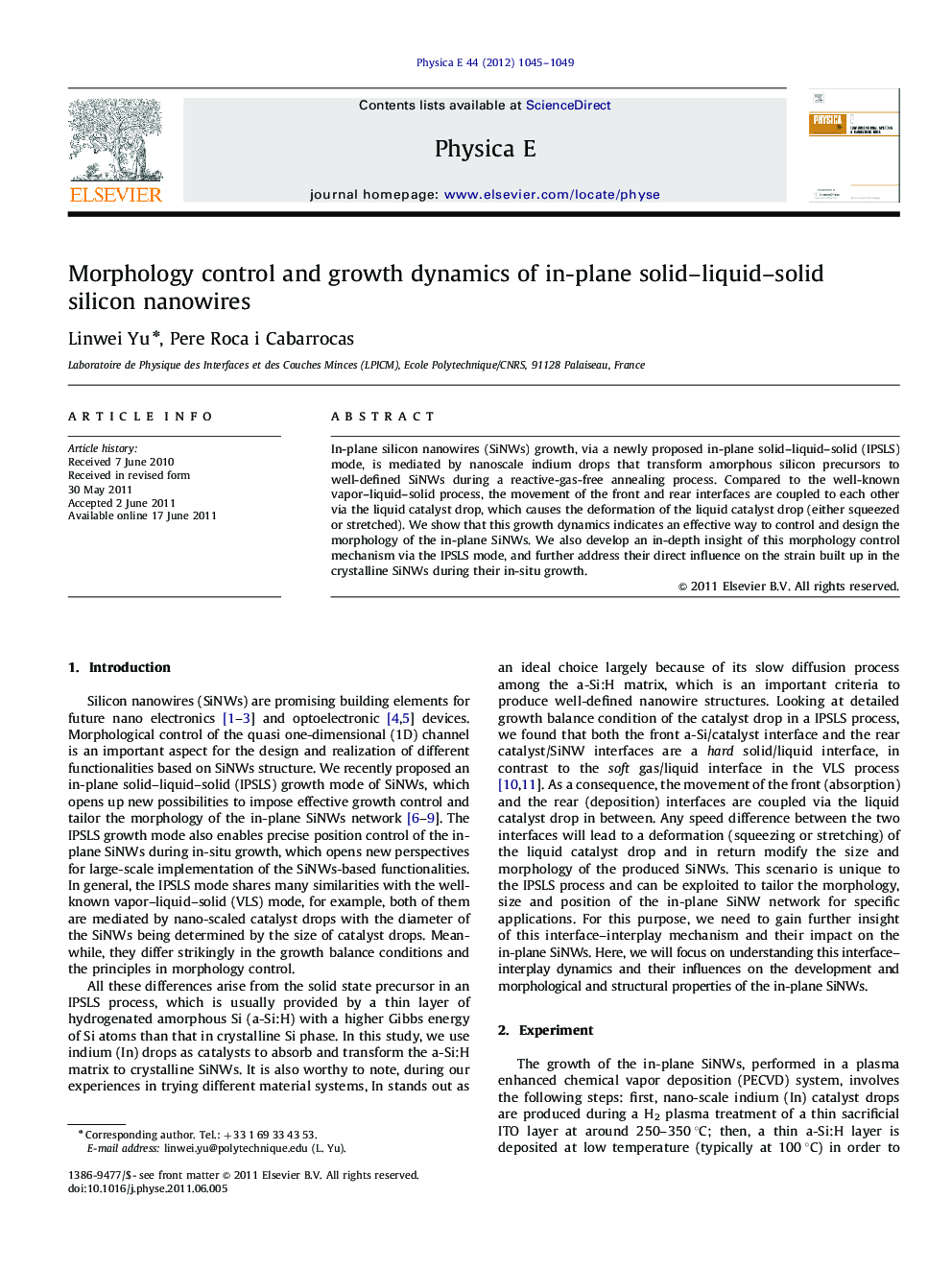| Article ID | Journal | Published Year | Pages | File Type |
|---|---|---|---|---|
| 1544890 | Physica E: Low-dimensional Systems and Nanostructures | 2012 | 5 Pages |
In-plane silicon nanowires (SiNWs) growth, via a newly proposed in-plane solid–liquid–solid (IPSLS) mode, is mediated by nanoscale indium drops that transform amorphous silicon precursors to well-defined SiNWs during a reactive-gas-free annealing process. Compared to the well-known vapor–liquid–solid process, the movement of the front and rear interfaces are coupled to each other via the liquid catalyst drop, which causes the deformation of the liquid catalyst drop (either squeezed or stretched). We show that this growth dynamics indicates an effective way to control and design the morphology of the in-plane SiNWs. We also develop an in-depth insight of this morphology control mechanism via the IPSLS mode, and further address their direct influence on the strain built up in the crystalline SiNWs during their in-situ growth.
Graphical abstractEffective morphology control of crystalline SiNWs can been achieved via a newly proposed IPSLS model. For example, SEM images of (a) shows a thick SiNW (∼300 nm) grown under growth condition η<1 and of a thin SiNWs (∼150 nm) grown under η>1, with the enlarged view of the straight SiNW presented in (b). (c) shows a zigzag SiNW with regular growth orientations switching obtained under a condition of η>1, as a result of the coupling between the growth switching and the preferential orientation of crystalline Si .Figure optionsDownload full-size imageDownload as PowerPoint slideHighlights► Effective morphology control of crystalline in-plane silicon nanowires has been demonstrated. ► This ability has been achieved during a simple in-situ and reacting-gas-free annealing process. ► HR-TEM data supports the crystallinity of the silicon nanowires grown in IPSLS mode. ► Built-in strains could be introduced by the growth dynamics into the crystalline SiNWs.
